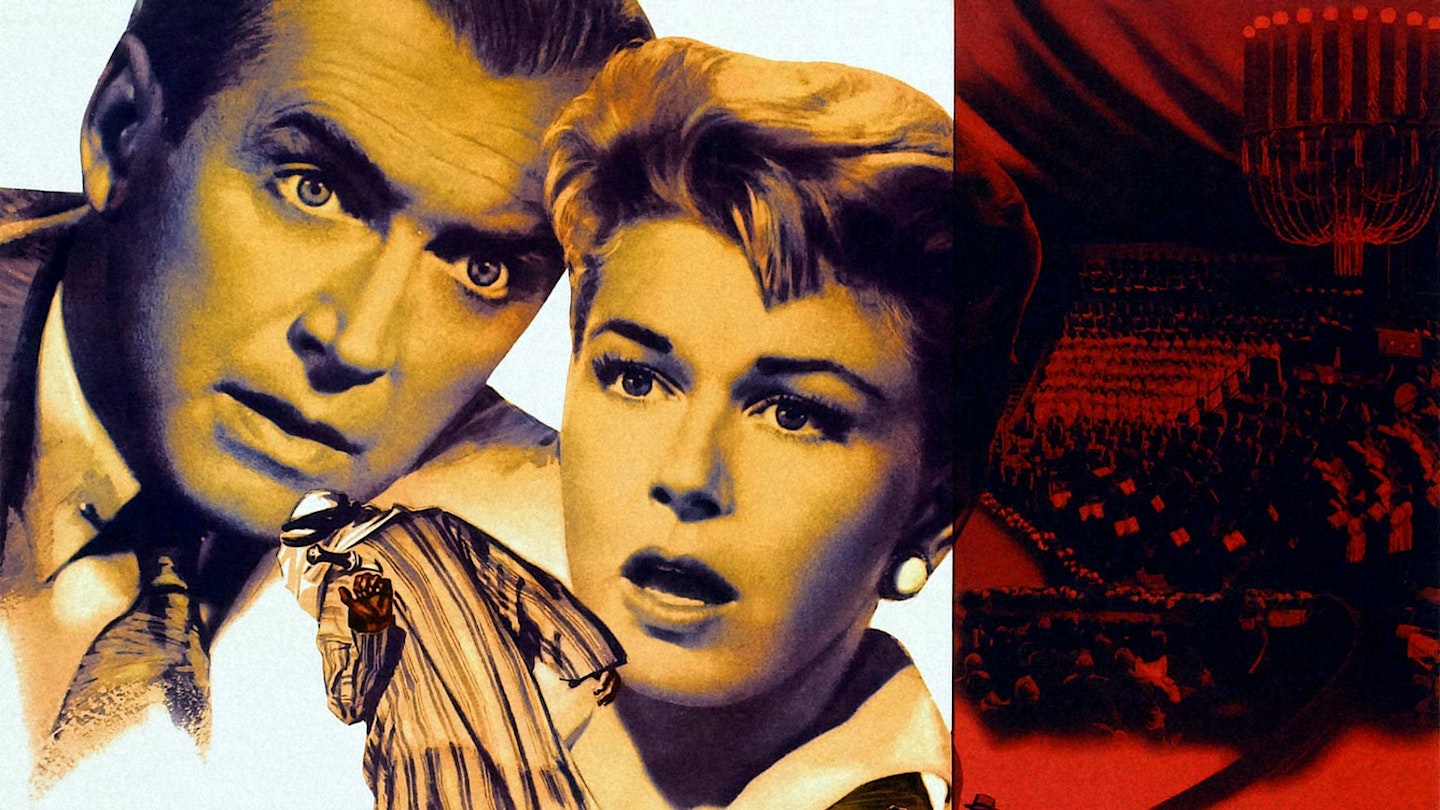The story of ‘a single crash of cymbals and how it rocked the lives of an American family.’ In 1935, Alfred Hitchcock directed a neat little British thriller that begins in the snows of Switzerland and ends up at the Albert Hall (where Peter Lorre is behind an assassination attempt).
In 1956, Hitch mounted an elaborate remake which lacks the original's crisp pace, but makes up for it with star value, sumptuous colour and sustained suspense.
The Moroccan sequence sets up James Stewart as the archetypal know-nothing American abroad, who can’t get comfortable sat on a cushion in a restaurant and is perpetually on the point of setting off angry mobs with his ignorance of local customs – so it’s a clever gag that he becomes the man who knows too much.
The action shifts to London, for an eerie red herring sequence set in a taxidermist’s shop and some sinister business with an apparently benign parson (Bernard Miles) who is behind the villainy, while the unforgettably evil‑looking Reggie Nadler (later the vampire in Tobe Hooper’s Salem’s Lot) lurks in readiness to fire the fatal shot covered by a cymbal crash.
Day, not immediately an obvious Hitchcock heroine, is surprisingly good, and the script deserves contrivance points for making several good excuses for her to perform a classic, Oscar-winning song ('Que Sera Sera').
The finale in the Albert Hall is an exact recreation of the 1935 film, with composer Bernard Herrmann on screen as the conductor.
